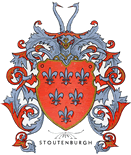by Gary Urbanowicz, Historian
Hon. Deputy Chief — Fire Department of New York * (See bio below.)
In December 1737, six years after the first fire engines arrived in New York from London, the City’s Common Council passed legislation authorizing the appointment of up to forty-two “strong, able, discreet, honest and sober men…[who] shall be called Firemen of the City of New York.” Thirty were appointed in the first wave, one of whom bore the name, Jacobus Stoutenburgh.
As an historian of the Fire Department of New York, I undertake projects to search out facts about the Department’s history that have fallen to the wayside. Members who served early on, especially prior to the change to a paid force in 1865, are of particular interest to me. At the present time, I am documenting and photographing the final resting places of these men. So, a web search of the name Jacobus Stoutenburgh (identified as #24 of Generation 3 on your website) led me to the Stoutenburgh-Teller Family Association and a visit to the burial ground in Hyde Park. Although greatly disappointed that I didn’t find “Jacobus the Fireman” there, I was pleased to correspond with Ila Malloy who has been very accommodating to my inquiries.

The family played such a significant role in firefighting in the City, that these same texts that describe their involvement are embellished with related images, including Jacobus’ house on Fair (now Fulton) Street and Isaac’s home at the intersection of Greenwich and Dey Streets.
When George Washington evacuated New York in September 1776, the firemen, with Jacobus at their lead, became part of the militia. But my trail ends there. When and how he died, as well as where he was laid to rest, is apparently as much a mystery for you, his family, as it is for me.
I welcome any additional biographical information you can provide on Jacobus (#24) and any other members of the family from New York City who might have had positions of civic responsibility. If you know the final resting places of any members of the family who spent their lives in New York City, that would be helpful as well.
*Gary Urbanowicz is an historian of the New York Fire Department holding the honorary rank of Deputy Chief. He is the author of “Badges of the Bravest” (See preview below.) and “The Last Alarm” and has contributed to several publications on the history of the FDNY. After the tragic events of 9/11/01, Gary and his wife Nancy were on the team of writers to prepare the eulogies for the 343 NYC firefighters killed on that day. His particular area of interest is the pre-1865 volunteer era of the FDNY. He owns a 1962 FDNY Chief’s car replicating the one that he grew up with in his father’s firehouse in Brooklyn, NY. The Urbanowicz’s reside in Westchester County.
Additional References:
- Our Firemen, The History of the NY Fire Departments
- Could This Bucket Have Saved St. Paul’s Chapel?
-
The following image of Isaac Stoutenburgh’s home is from “As You Pass By” by Kenneth Dunshee.
-
Greenwich and Dey Streets 1810
Watercolor by Baroness Hyde De Neuville (Stokes Collection, New York Public Library)
The view shows the corner of Greenwich and Dey Streets in 1810, with the latter street in the foreground. The three-story residence at the right was built circa 1786 by Isaac Stoutenburgh, son of Jacobus Stoutenburgh, a gunsmith who was one of New York’s original firemen–appointed in 1738. Jacobus succeeded Jacob Turk, also a gunsmith, as Overseer or Chief Engineer in 1762 and held that office until 1776. When the Revolutionary War broke out, the entire Fire Department, consisting of 116 men, was detailed as a home guard under General George Washington with Stoutenburgh in command at fires. Few of the original firemen survived the war.
-


